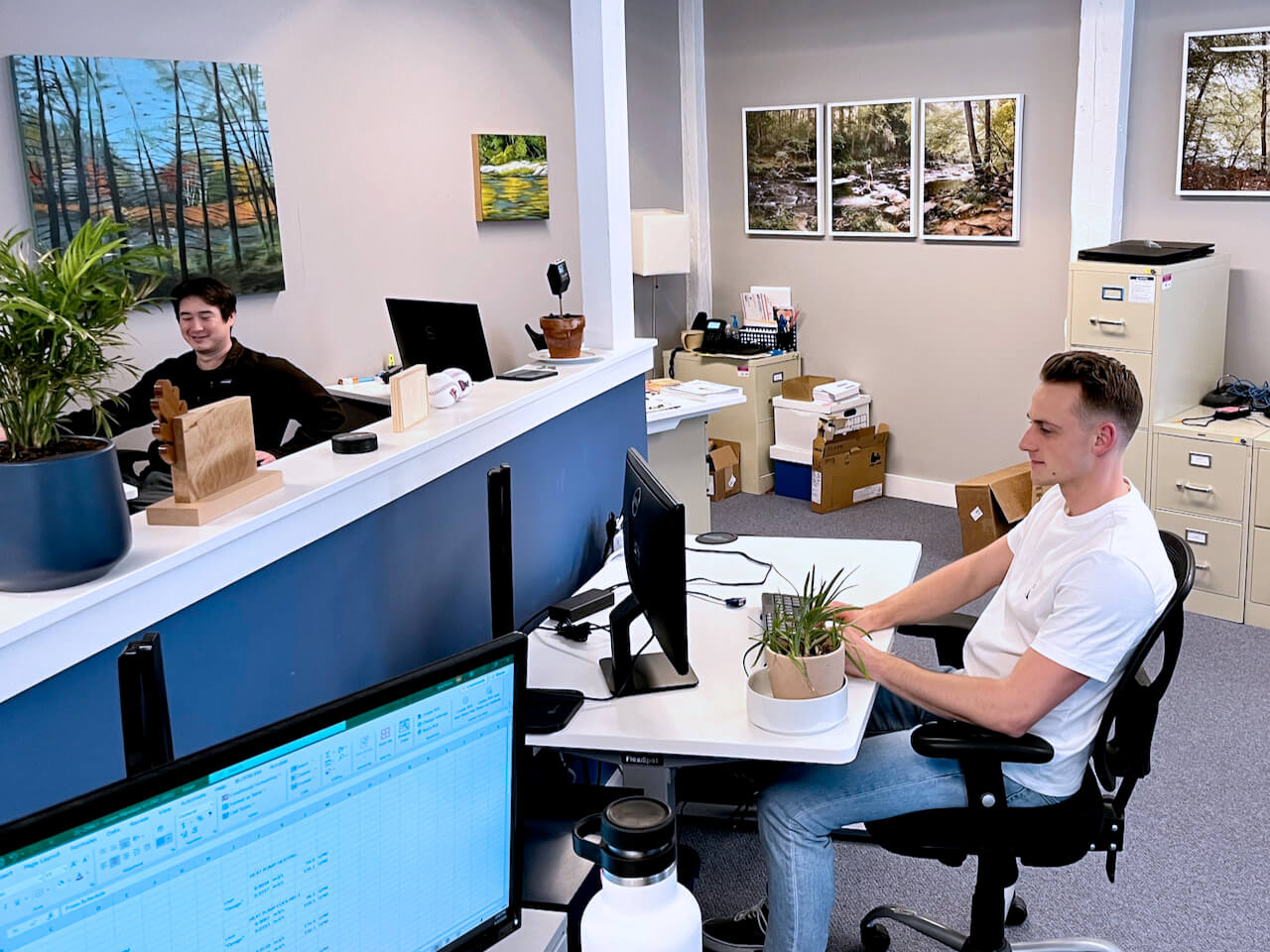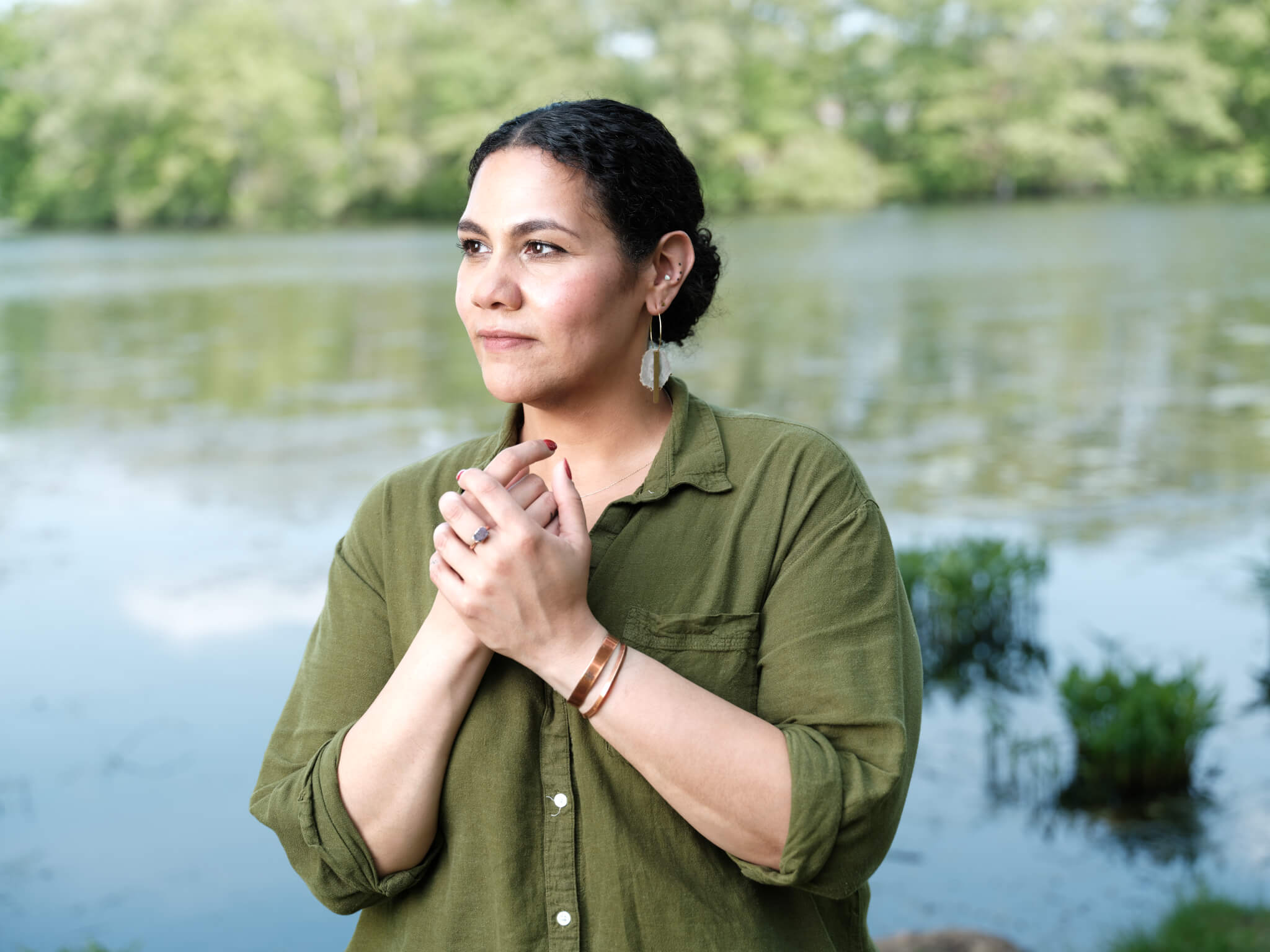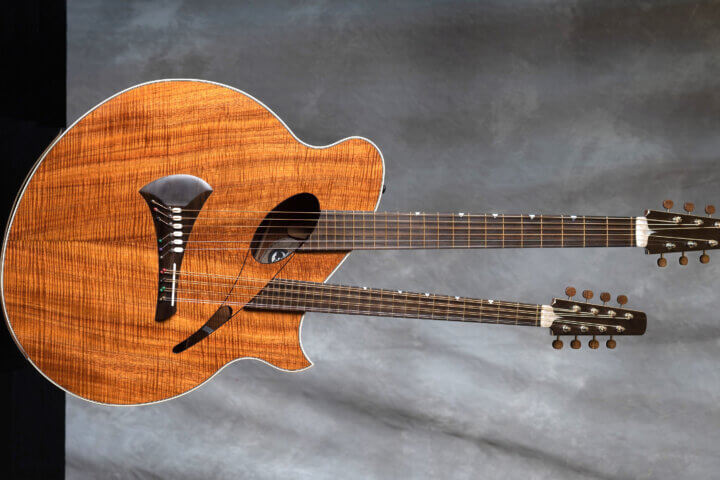By Chris Randall — Correspondent
Studies on human activity patterns show we spend 90% of our lives indoors. Yet research shows that spending time outdoors improves our physical and mental well-being.
Two firms and an art group based at the Bradford Mill in West Concord are exploring ways to enhance indoor spaces by bringing the outside in.
The concept of biophilia — that humans have an innate tendency to seek connections with nature — was first used by sociologist and psychoanalyst Erich Fromm in his 1973 book, “The Anatomy of Human Destructiveness,” and later popularized in a 1984 book, “Biophilia,” by biologist Edward O. Wilson.
As design, materials science, and environmental psychology have advanced, there’s been an emphasis on bringing the outdoors into built environments in both noticeable and indirect ways.
“Biophilia,” an installation that illustrates how biophilic art enhances interior spaces, opens at the offices of The Green Engineer (TGE) on April 24. It features works by ArtScape photographer Suzanne Revy and painters Irene Stapleford and Lola Chaisson.
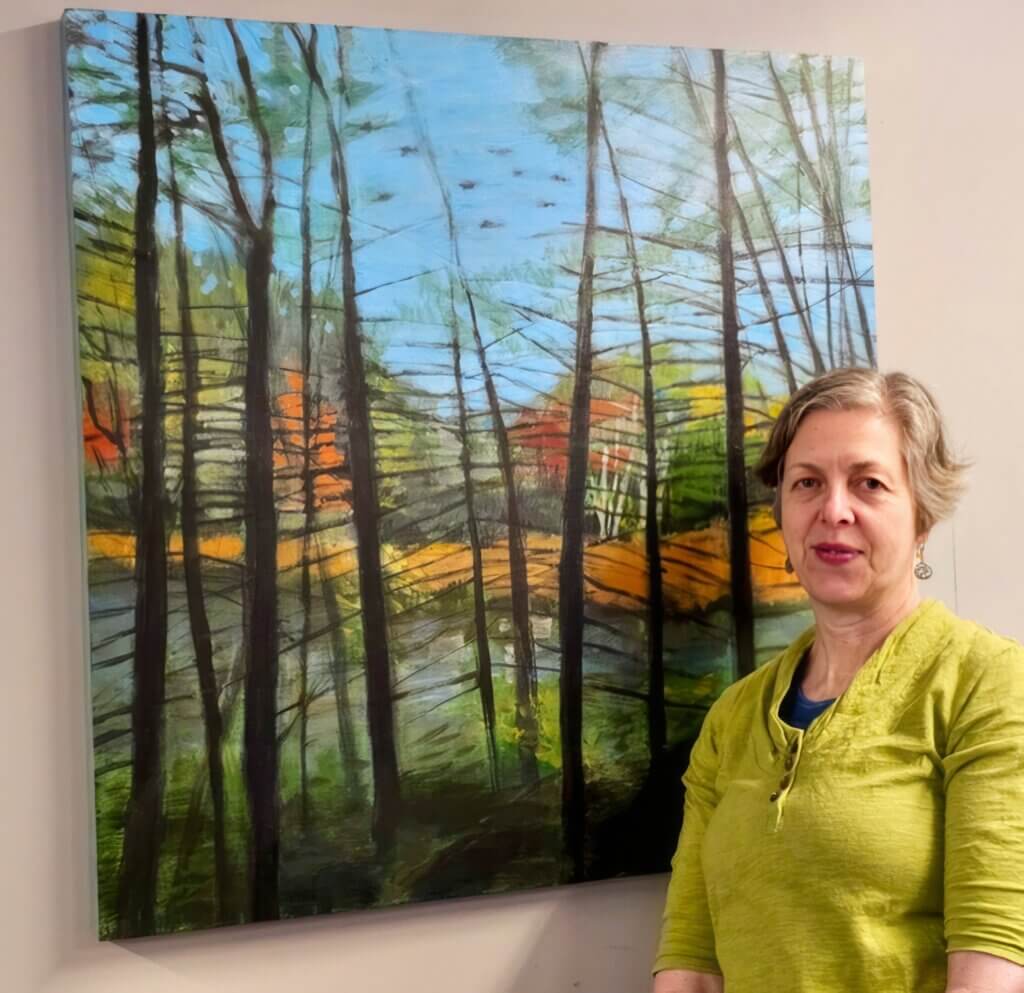
Nature’s effects
The non-profit Human Architecture and Planning Institute (HAPI), also in the Bradford Mill, will partner in the project, providing a way to let users know how they were affected by seeing images of the natural world in an indoor space.
TGE services include determining how energy efficient a building is, planning ways to lessen a building or industry’s carbon footprint, and assisting property owners in obtaining certifications for efficient energy use, environmental design, and health and well-being.
“We wanted to walk the talk,” said TGE’s Senior Sustainability Consultant Michael Munn, referring to two dozen paintings and photographs —scenes of forests, rivers, and countrysides — that just went up in its office.
Employee-owned TGE has teamed with building-mate ArtScape “to explore ways to incorporate representations of nature into our space through patterns, art, and indoor plantings,” Munn said.
ArtScape is “a vibrant community of artists, many of whom draw their inspiration from nature and are passionate about the role of art in connecting people to nature and place,” said Director Ann Sussman.

The partnership “goes one step further,” Munn said: “Displaying biophilic elements was a start, but there was an opportunity to support an important local community of artists.”
TGE is leasing ArtScape pieces on an annual basis, effectively serving “as both a connection to nature via the artwork and a connection to place by supporting local community members.”
Feedback from TGE employees has been positive. “When I look at the photograph of a woodland river right above my computer screen, I can feel my stress level drop,” one said.
Try it at home
The exhibit has a related, high-tech twist that visitors can try at home: To test the idea that people are affected by spaces with a connection to nature, HAPI will employ eye-tracking software, doing biometric assessments of how they respond to their surroundings.
People can visit theHapi.org starting April 24 to get a link that will record how they react to images in the TGE office space before and after the art exhibit, using a computer’s camera. (No individual data is released, so privacy is ensured.)
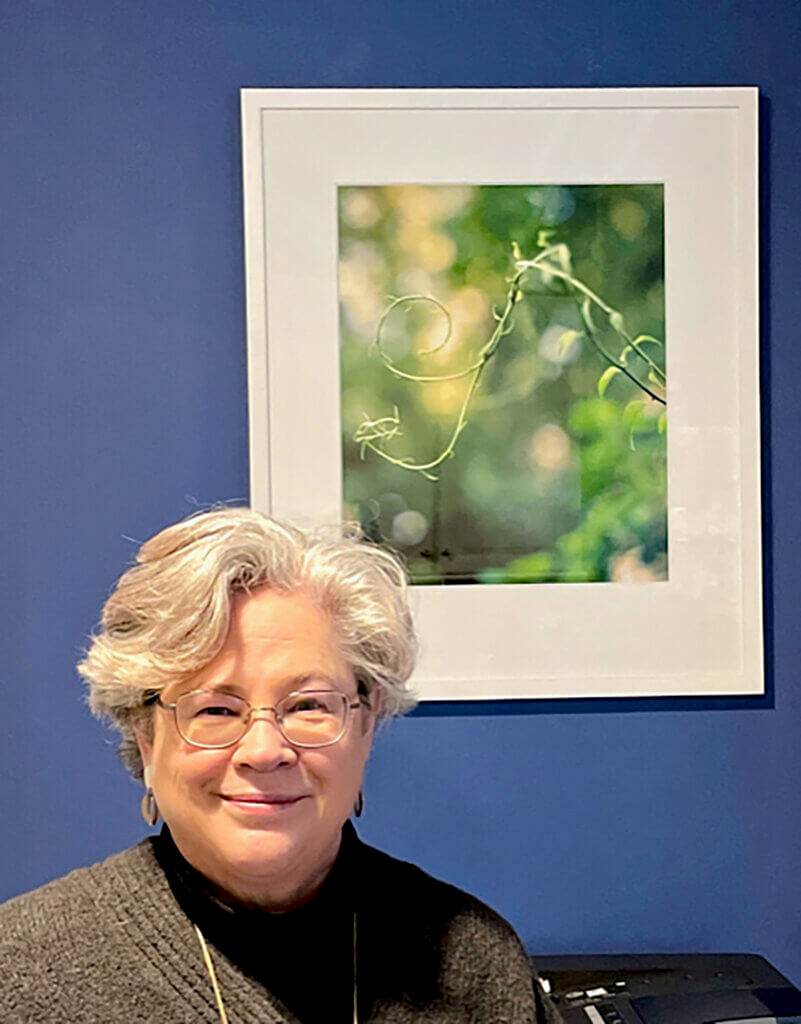
Besides examining the premise behind biophilia, the study showcases technology used commercially to analyze client experience and promote consumption. “The pivot the HAPI is making here,” Sussman notes, “is that we’re using the software to promote well-being.”
“Biophilia” opens April 24 with a reception from 4 to 6 p.m. at TGE, located on the third floor of 33 Bradford Street. It will run Monday through Thursday from noon to 4 p.m. throughout 2024. Call TGE at (978) 369-8978 to arrange a visit.


